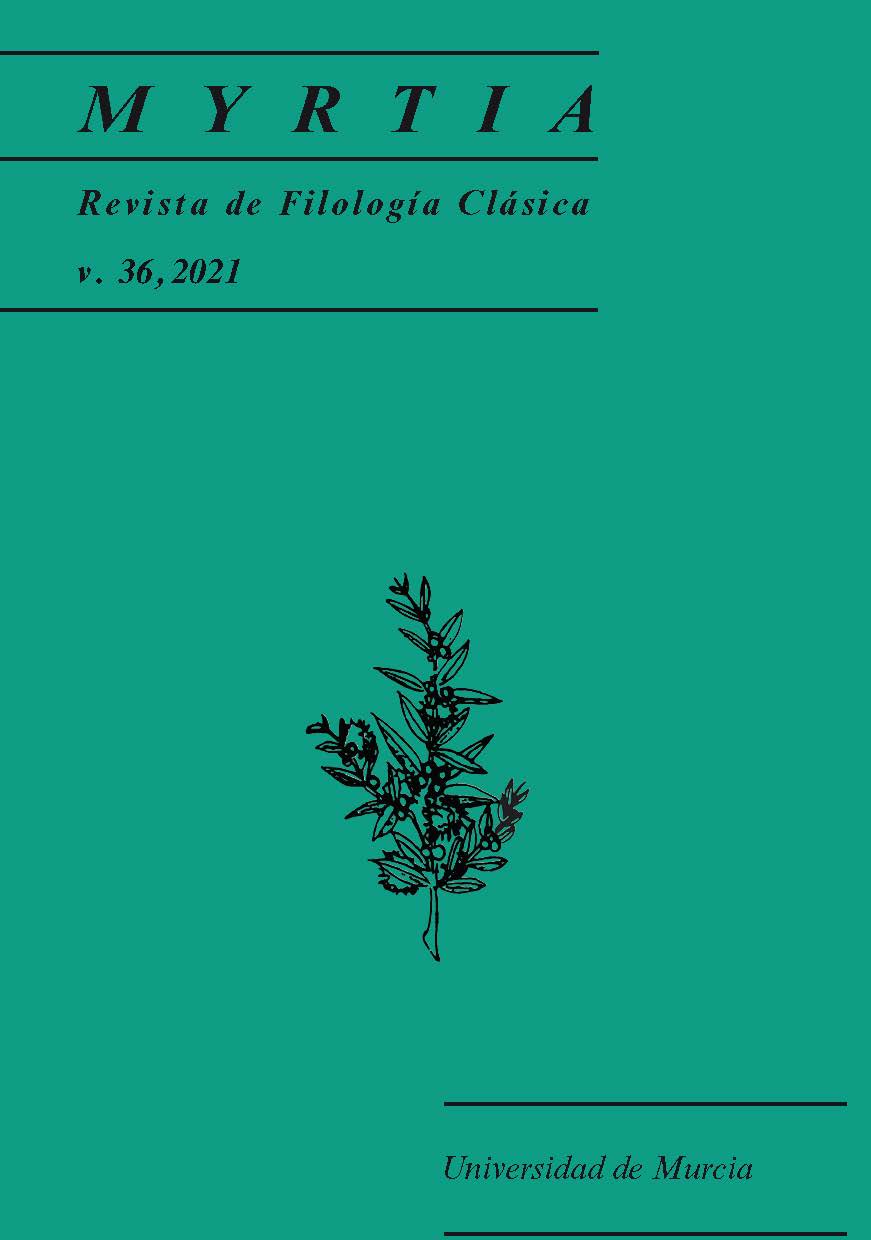Homero, paleolítico cuentista
Descargas
-
Resumen1099
-
PDF850
Citas
M. Alinei, 1996, Origini delle lingue d’Europa. I. La Teoria della Continuità, Bolonia, Il Mulino.
S. Amadou y J. M. Pedrosa, 2014, El héroe que fue al infierno y escuchó que cantaban allí su epopeya. Cantos épicos del pueblo djerma de Níger, Madrid, Calambur Editorial.
M. R. Bachvarora, 2016, From Hittite to Homer. The Anatolian Background of Ancient Greek Epic, Cambridge, Cambridge University Press.
A. Ballabriga, 1981, “La malheur des nains. Quelques aspects du combat des grues contre les Pygmées dans la littérature grecque”, Revue des Études Anciennes 83, 57–74.
Y. Berezkin, 2007, “Dwarfs and Cranes. Baltic–Finnish Mythologies in Eurasian and American Perspective (70 years after Yrjö Toivonen)”, Folklore 36, 75–96.
A. Bernabé, 1984, “Quérilo y la geranomaquia. Sobre el fr. 13 Colace (= 14 Kinkel = Suppl. Hell. 332”, Emerita 52.2, 319–323.
C. M. Bowra, 1984, Poesía y canto primitivo, trad. C. Agustín, Barcelona, Antoni Bosch editor.
R. Carpenter, 1946, Folk Tale, Fiction and Saga in the Homeric Epics, Berkeley – Los Ángeles, University of California Press.
P. Chantraine, 1999, Dictionnaire étymologique de la langue grecque. Histoire des mots, París, Klincksieck.
J. d’Huy, 2014–2015, “Polyphemus: a Palaeolithic Tale?”, The Retrospective Methods Network Newsletter 9 (Winter), 43–64.
M. Deriu, 2020, Nēsoi: L’immaginario insulare nell’Odissea, Venecia, Edizioni Ca’ Foscari.
G. J. Dimmendaal, 2000, “Morphology”, Bernd Heine & Derek Nurse edd., African Languages. An Introduction, Cambridge, Cambridge University Press, pp. 161–193.
M. Gimbutas, 1898, The Language of the Goddess: Unearthing the Hidden Symbols of Western Civilization, Londres, Thames and Hudson.
M. Gimbutas, ,1991, Diosas y dioses de la vieja europa (6500–3500 a.C.), trad. Ana Parrondo, Madrid, Ediciones Istmo.
J.-L. Le Quellec y J. d’Huy, 2017, “Géranomaquie: aréologie et phénétique”, Alain Meurant ed., Traditions indo–européennes et patrimoines folkloriques. Mélanges offerts à Bernard Sergent, París, L’Harmattan, pp. 281–308.
C. Lévi–Strauss, 1971, L’homme nu, París, Plon.
L. Magini, 2018-2019, “Shamanic Hunting Rites at the Place in Ithaca”, Philology 4, 333–345.
N. Marinatos, 2001, “The Cosmic Journey of Odysseus”, Numen 48, 381–411.
M. Mithun, 2001, The Languages of Native North America, Cambridge, Cambridge University Press [= 1999].
A. Ovadiah y S. Mucznik, 2017, “Myth and Reality in the Battle between the Pygmies and the Cranes in the Greek and Roman Worlds”, Gerión 35.1, 151–166.
L. Segalá y Estalella, 111976, Homero. La Ilíada, Madrid, Espasa–Calpe [= 1954].
M. Thuillard, J.-L. Le Quellec, J. d’Huy y Y. Berezkin, 2018, “A Large–Scale Study of World Myths”, Trames 22, 407–424 [con anexo clasificatorio].
Las obras que se publican en esta revista están sujetas a los siguientes términos:
1. El Servicio de Publicaciones de la Universidad de Murcia (la editorial) conserva los derechos patrimoniales (copyright) de las obras publicadas, y favorece y permite la reutilización de las mismas bajo la licencia de uso indicada en el punto 2.
2. Las obras se publican en la edición electrónica de la revista bajo una licencia Creative Commons Reconocimiento-NoComercial-SinObraDerivada 3.0 España (texto legal). Se pueden copiar, usar, difundir, transmitir y exponer públicamente, siempre que: i) se cite la autoría y la fuente original de su publicación (revista, editorial y URL de la obra); ii) no se usen para fines comerciales; iii) se mencione la existencia y especificaciones de esta licencia de uso.
3. Condiciones de auto-archivo. Se permite y se anima a los autores a difundir electrónicamente las versiones pre-print (versión antes de ser evaluada) y/o post-print (versión evaluada y aceptada para su publicación) de sus obras antes de su publicación, ya que favorece su circulación y difusión más temprana y con ello un posible aumento en su citación y alcance entre la comunidad académica. Color RoMEO: verde.





